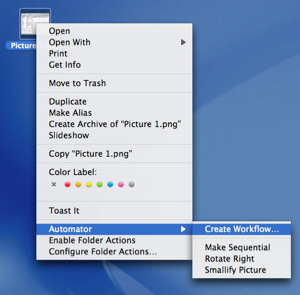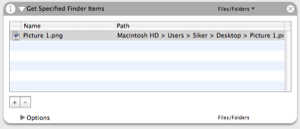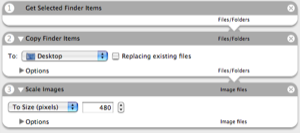For an online company, a CMS is almost something required. I would go as far as saying a CMS is for an online business as a binders with indexes are to an accountant – it’s simply necessary.
However, since we’re just starting up, we still have no need for a CMS, a small blog is all we have to offer you at this point. But this doesn’t mean that we don’t have any experiences with CMSes. I have for instance been working with another company to migrate their old static (Frontpage-made) homepage into a modern CMS with a webshop.
The result? The company was extremely happy, and was surprised that I could create such complex web-page for that cost.
So what was the cost of the software? $0.
I guess you know us by now, and that you probably already figured out that I was using Open Source software for this, and that was the reason for the low cost. So what did I learn by setting up this CMS? What software did I use? What should one consider when choosing a CMS?
What software should I choose?
A good start is to surf over to Opensourcecms.com, where you will find pretty much every Open Source CMS/Blog on the market, set up in the default mode. Here you can both browse the admin- and frontend-interface. In addition to this they also have a good list of features for the different softwares.
My initial choice here was Mambo, because I liked both the front-end and back-end as well as the features.
Will my server support the software?
Most likely. Most of the more sophisticated hosts do run their servers on Apache with PHP4/5 with MySQL as the database-server. However, if your host do not run this setup, you might still be able to run the software, but you have to check the specifications on the software. Whether your server runs Linux (any distribution), FreeBSD or any other flavor of *nix, shouldn’t make any difference.
I want to set up a webshop that integrates with my CMS, what CMS should I choose?
There’re plenty of CMSes that can be set up with webshops, but I ended up choosing Mambo, because it could be easily integrated with VirtueMart, that is a sophisticated Open Source webshop.
However, I said that I initially chose Mambo. I’m currently in the stage of migrating away from it. The reason for this is that I did experience problems with the compatibility between Mambo and VirtueMart. They seem to work nicely together in general, but I’m having major problems with Firefox, which of course bothers me a lot.
The CMS I’m currently migrating to is Joomla!, which is a development of Mambo, where parts of the Mambo-development team broke away from Mambo and went their own way. Joomla! and VirtueMart are closely connected, and the VirtueMart-team recommends Joomla! rather than Mambo to run with their software.
Another reason for migrating away from Mambo is their upgrade to 4.6.x. This upgrade is a major upgrade from the previous 4.5.4-release, but it came with a big price. I’ve spent several hours trying to migrate over to the new release, but every time I ended up going back to 4.5.4 due to miscellaneous errors that occurred. In addition to this, when 4.6.0 was released as stable many people started to upgrade their sites, and most people ran into serious problems. A day or two later 4.6.0 was declared unstable. This lead many, many webmasters to spend several hours in this progress up upgrading, and finally having to give up and move back to the previous release (if they had a backup that is). I’ve read many stories in the forum from webmasters who had major downtime on their sites due to this problem. Sure everybody can make mistakes, but this was one severe mistake from the Mambo-team. If you’re trying to make a software that appears to business-clients, you simply cannot afford these kind of mistakes.
What is the major drawbacks of running Open Source CMSes?
So far, the only real problem I’ve experienced with this setup has been problems with VirtueMart. Sure, Mambo/Joomla! and VirtueMart does have a fairly steep learning curve for the average computer user, but once you understand the system it’s fairly straight-forward.
One word of warning though, don’t expect equally good forum-support for VirtueMart as in many of the other Open Source-projects. The code of VirtueMart appears to be something of a mess, where only the lead programmer knows how things really works. Their forum is filled with posts without answers, so don’t count on getting all your posts answered.
So what software would you recommend for an online business?
VirtueMart
Joom!Fish
- To make your site multi-lingual
REPository
- To handle downloads on your CMS
SMF
- If you need a forum on your CMS
I guess that’s it. That is the setup I would use if I were to set up a CMS for our company at the moment.
Stay tuned for the next part of the CMS-series. The next episode will include more in detail use of Joom!Fish as well as the migration process from Mambo to Joomla!.
Author: Viktor Petersson Tags: guide,
internet

 This will bring up the Automator screen. Sweet. On the right hand side in the Automator you will see your picture preselected in an ‘Action’ called ‘Get Specified Finder Items.’ This tells Automator to load the picture you right clicked on in the second step.
This will bring up the Automator screen. Sweet. On the right hand side in the Automator you will see your picture preselected in an ‘Action’ called ‘Get Specified Finder Items.’ This tells Automator to load the picture you right clicked on in the second step. You will find the ‘Scale Images’ Action in your list of actions now. Go ahead and set the desired size you want. I’m setting it to 480 pixels, meaning the image will be 480 pixels wide once the Automation has run.
You will find the ‘Scale Images’ Action in your list of actions now. Go ahead and set the desired size you want. I’m setting it to 480 pixels, meaning the image will be 480 pixels wide once the Automation has run. Note that in this version your original picture needs to be in a different folder than the Desktop or the copy action will fail, as I mentioned in 4.
Note that in this version your original picture needs to be in a different folder than the Desktop or the copy action will fail, as I mentioned in 4.


 Blink This
Blink This Plug This
Plug This